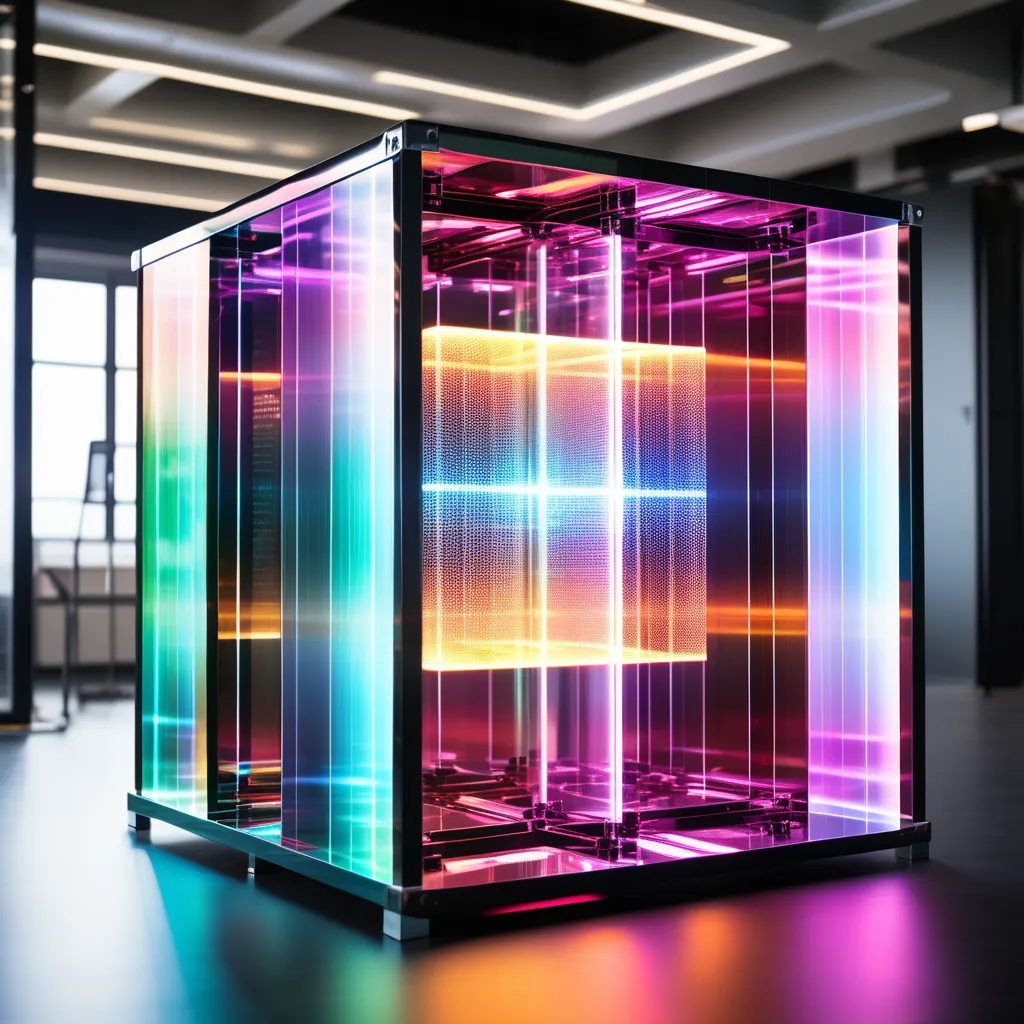Breakthrough in Holographic Data Storage
In a world where data is the lifeblood of our digital existence, the quest for more efficient and capacious data storage solutions never ceases. Imagine a future where you could store vast libraries of information on a single tiny crystal, like something out of a science fiction movie. Well, that future may be closer than we think, thanks to a groundbreaking achievement: holographic data storage. In this article, we'll delve into this cutting-edge technology, explore its implications for the digital world, and share some personal reflections on the ever-evolving landscape of data storage.

From Floppy Disks to Holograms
The Evolution of Data Storage
The journey from floppy disks to cloud storage has been nothing short of remarkable. Holographic data storage represents the next frontier in this ongoing evolution.
My First Computer
My first computer had a floppy disk drive that could barely hold a few megabytes of data. The contrast between those early days and the holographic data storage breakthrough is astounding.
The Science Behind Holographic Storage
Light and Holograms
Holographic storage relies on the principles of light interference to encode and retrieve data in three dimensions. Unlike traditional storage, which records data in a linear fashion, holography stores it as intricate patterns within a crystal.
Learning about Optics
Studying optics in college opened my eyes to the fascinating world of light and its myriad applications. Holography always stood out as a field with untapped potential.
Unprecedented Data Density
A Crystal the Size of a Sugar Cube
One of the most intriguing aspects of holographic data storage is its incredible data density. It's like fitting an entire library on a sugar cube-sized crystal.
Memories of Libraries
I have fond memories of getting lost in the aisles of my local library as a child, surrounded by the vast sea of knowledge. Holographic storage brings the dream of having all that information at our fingertips closer to reality.
Speed and Durability
Swift Access and Longevity
Holographic storage not only offers impressive data density but also provides lightning-fast access times and exceptional durability. It's a win-win for data enthusiasts.
Lessons from Old Record Players
Listening to vinyl records on an old turntable taught me about the durability of analog storage. Holographic storage seems poised to bring that durability to the digital realm.
Practical Applications
Beyond the Cloud
While cloud storage has become ubiquitous, holographic data storage can cater to applications where rapid data access, archival preservation, and data security are paramount.
Conversations with Tech Enthusiasts
Engaging in conversations with fellow tech enthusiasts, I've realized that the potential applications of holographic storage are vast, from data centers to long-term archival solutions.
The Road Ahead
A Glimpse into Tomorrow
Holographic data storage is still in its infancy, but the possibilities it presents are incredibly exciting. As the technology matures, we can expect even more astonishing developments.
Looking at the Night Sky
Staring at the night sky, I can't help but draw parallels between the limitless expanse of the cosmos and the boundless potential of data storage. Holography feels like a step closer to unlocking the mysteries of the digital universe.

Conclusion
In conclusion, the breakthrough in holographic data storage represents a leap forward in our ability to store, access, and preserve the ever-expanding volumes of digital information. It offers a glimpse into a future where data storage is not just efficient but also immensely compact and robust.
As we embrace this new frontier in data storage, let's continue to be awed by the relentless march of technology and its potential to reshape our digital landscape. It's a journey that promises to transform the way we store and interact with information, and it's one we should eagerly embark upon.

No comments:
Post a Comment